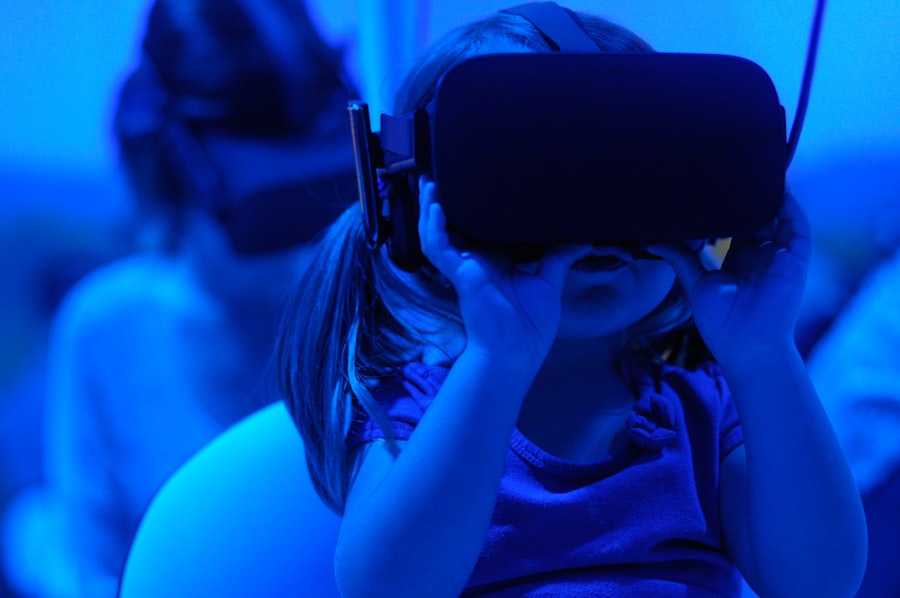Download links
How to install Exploring the Virtual Life: A Journey into Digital Realms APK?
1. Tap the downloaded Exploring the Virtual Life: A Journey into Digital Realms APK file.
2. Touch install.
3. Follow the steps on the screen.
Description
In recent years, the concept of virtual life has transcended mere novelty to become a significant aspect of modern existence. Virtual life encompasses a wide array of experiences, from immersive online gaming environments to social media platforms and virtual reality (VR) spaces. As technology continues to evolve, the boundaries between the physical and digital realms blur, leading to a new paradigm where individuals can interact, create, and express themselves in ways previously unimaginable.
This shift has profound implications for how we perceive identity, community, and even commerce. The rise of virtual life is not merely a byproduct of technological advancement; it reflects a fundamental change in human behavior and social interaction. As people increasingly seek connection and engagement beyond the limitations of their physical surroundings, virtual spaces offer an escape and a means of exploration.
The allure of these digital environments lies in their ability to provide a sense of agency and freedom, allowing individuals to craft their experiences and relationships in ways that resonate with their desires and aspirations. This article delves into the multifaceted nature of virtual life, examining how individuals navigate these digital landscapes, construct their identities, foster connections, engage in economic activities, and balance their virtual experiences with real-world responsibilities.
Key Takeaways
- Virtual life offers a new way to experience and interact with the world through digital platforms and technologies.
- Navigating virtual worlds requires understanding the interface, controls, and mechanics of the specific platform or game.
- Building a digital identity involves creating an online persona, choosing avatars, and curating a virtual presence.
- Socializing and connecting in virtual spaces allows for meeting new people, joining communities, and engaging in virtual events and activities.
- Exploring virtual economies involves understanding virtual currencies, trading, and participating in virtual marketplaces while balancing real-life responsibilities and commitments.
Navigating Virtual Worlds
Navigating virtual worlds requires a unique set of skills and an understanding of the diverse landscapes that exist within them. From expansive multiplayer online games to intricate social networking sites, each platform presents its own challenges and opportunities. For instance, in massively multiplayer online role-playing games (MMORPGs) like “World of Warcraft,” players must learn to traverse vast terrains, engage in complex quests, and collaborate with others to achieve common goals.
Mastering these environments often involves not only technical proficiency but also social acumen, as players must communicate effectively and build alliances to succeed. Moreover, the design of virtual worlds plays a crucial role in shaping user experience. Developers invest significant resources into creating immersive environments that captivate users’ attention and encourage exploration.
For example, the vibrant landscapes of “The Legend of Zelda: Breath of the Wild” invite players to discover hidden secrets and engage with the world in meaningful ways. Similarly, social platforms like “Second Life” allow users to create their own spaces, fostering creativity and self-expression. As individuals navigate these worlds, they develop a sense of agency that empowers them to shape their experiences and interactions.
Building a Digital Identity

The construction of a digital identity is a central aspect of virtual life, as individuals curate their online personas to reflect their interests, values, and aspirations. This process often begins with the selection of avatars or profiles that serve as representations of oneself in various digital contexts. In gaming environments, players may choose avatars that embody their ideal selves—whether that means crafting a heroic warrior or a whimsical creature.
The implications of digital identity extend beyond mere aesthetics; they influence how individuals interact with one another and how they perceive themselves. Research has shown that the way people present themselves online can significantly impact their self-esteem and social relationships.
For instance, individuals who receive positive feedback on their digital personas may experience enhanced self-worth, while those who face criticism may struggle with feelings of inadequacy. Furthermore, the fluidity of digital identity allows for experimentation and reinvention; users can explore different facets of themselves without the constraints imposed by the physical world.
Socializing and Connecting in Virtual Spaces
| Platform | Number of Users | Engagement Rate |
|---|---|---|
| 2.8 billion | 70% | |
| 1 billion | 60% | |
| 330 million | 45% |
Socializing in virtual spaces has become an integral part of contemporary life, offering opportunities for connection that transcend geographical boundaries. Online platforms facilitate interactions among individuals from diverse backgrounds, fostering communities based on shared interests rather than proximity. For example, forums dedicated to specific hobbies or fandoms allow users to engage in discussions, share content, and form friendships with like-minded individuals across the globe.
This democratization of social interaction has led to the emergence of vibrant subcultures that thrive in digital environments. However, virtual socialization is not without its challenges. The absence of physical cues can lead to misunderstandings and miscommunications, as individuals may interpret messages differently than intended.
Additionally, the phenomenon of online harassment poses significant risks for many users, particularly marginalized groups who may face targeted attacks. Despite these challenges, many find solace in the supportive communities that exist within virtual spaces. Platforms like Discord or Reddit provide safe havens for individuals seeking camaraderie and understanding, allowing them to connect with others who share similar experiences or struggles.
Exploring Virtual Economies
The rise of virtual economies has transformed how individuals engage with commerce and value creation in digital spaces. Virtual currencies have emerged as a means of facilitating transactions within various platforms, enabling users to purchase goods and services ranging from in-game items to digital art. For instance, games like “Fortnite” have popularized the use of V-Bucks, a virtual currency that allows players to acquire cosmetic items and enhancements for their avatars.
This shift has not only created new revenue streams for developers but has also given rise to a burgeoning market for virtual goods. Moreover, the concept of digital ownership has gained traction with the advent of blockchain technology and non-fungible tokens (NFTs). Artists and creators can now tokenize their work, granting buyers verifiable ownership over unique digital assets.
This development has sparked debates about the nature of value in virtual economies and the implications for traditional art markets. As individuals navigate these economic landscapes, they must grapple with questions surrounding authenticity, scarcity, and the evolving definitions of ownership in an increasingly digitized world.
Balancing Real Life with Virtual Life

As virtual life becomes more intertwined with daily existence, finding a balance between online engagement and real-world responsibilities is essential. The immersive nature of virtual environments can lead to excessive screen time and potential neglect of personal relationships or obligations. Individuals may find themselves drawn into captivating digital experiences at the expense of their physical well-being or social connections outside the screen.
Recognizing this challenge is crucial for maintaining a healthy relationship with technology. Strategies for achieving balance often involve setting boundaries around virtual engagement. For instance, individuals might designate specific times for gaming or social media use while prioritizing face-to-face interactions with family and friends during other periods.
Mindfulness practices can also play a role in fostering awareness about one’s digital habits; by reflecting on how time spent online impacts overall well-being, individuals can make more informed choices about their engagement with virtual life. Ultimately, cultivating a harmonious coexistence between real-life experiences and virtual interactions is key to navigating this complex landscape effectively.
If you’re interested in exploring more virtual experiences, you may want to check out the article on my/2019/11/05/sweet-selfie-beauty-camera-editor-de-fotos/’>Sweet Selfie Beauty Camera Editor de Fotos.
This article discusses a popular app that allows users to enhance their photos with various filters and editing tools, creating a virtual transformation of their appearance. It’s a fun way to experiment with different looks and create stunning selfies in the virtual world.
FAQs
What is virtual life?
Virtual life refers to the experience of living and interacting in a digital or virtual environment, often through the use of technology such as virtual reality, augmented reality, or online platforms.
What are some examples of virtual life?
Examples of virtual life include virtual reality games and simulations, social media platforms, online communities, and virtual worlds such as Second Life and The Sims.
How does virtual life differ from real life?
Virtual life differs from real life in that it takes place in a digital or virtual environment, often with different rules and possibilities than those of the physical world. In virtual life, individuals can create and customize their own avatars, interact with others, and engage in activities that may not be possible in real life.
What are the benefits of virtual life?
Some potential benefits of virtual life include the ability to connect with others from around the world, explore new experiences and environments, and engage in activities that may not be accessible in real life. Virtual life can also provide opportunities for creativity, self-expression, and personal growth.
What are the potential drawbacks of virtual life?
Drawbacks of virtual life may include issues such as addiction, social isolation, and the blurring of boundaries between virtual and real life. There may also be concerns about privacy, security, and the impact of prolonged exposure to virtual environments on mental and emotional well-being.
How is virtual life evolving?
Virtual life is evolving with advancements in technology, such as the development of more immersive virtual reality experiences, the integration of virtual elements into everyday life through augmented reality, and the continued growth of online communities and virtual worlds. As technology continues to advance, virtual life is likely to become even more integrated into our daily lives.





